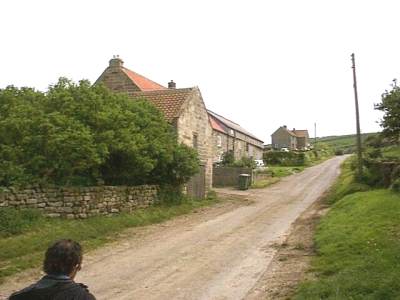
Roxby
 |
Roxby is a tiny farming village in the notheast corner of Yorkshire. The picture was taken in 1999; John Robert Boynton was walking from the church to the first farm house to get a key to open the church door. There is more to the village than is apparent in the photograph, but the size of the road reflects the size of the village. It is the road from A171 to Roxby, through the village, and then on to Staithes.
It is less than 10 miles from Roxby to Whitby, and less than 4 miles to Staithes. To get there you turn off A171, the major northern highway across the moors, and head down the narrow road that leads to Roxby and then on to Staithes.
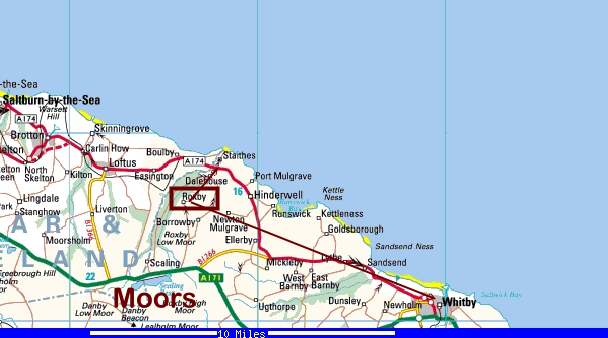 |
When we visited Roxby in 2001 [A Boynton Story: On the Trail of Boyntons] we found goats trimming the grass in the church cemetary and a bright red door. We visited Roxby in both 1999 and 2001 because it was an important Boynton place.
 |
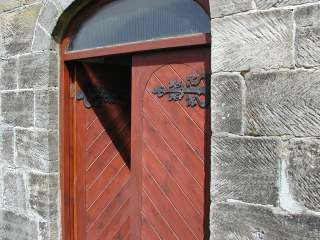 |
In 1231 Joan Acklam Boynton inherited the manors of Acklam and Roxby, and the Boynton triangle -- Acklam, Roxby and Boynton -- became the Boynton family fortune. [A Boynton Story: Marrying Well] In Domesday, 1086, Roxby was held by the king. The Victoria County History does not tell how Roger de Acklam came to hold the land from the king, but Joan was his only living heir when he died. [Victoria County History]
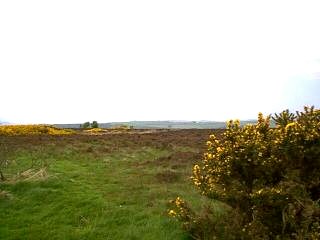 |
Roxby is just north of the moors. The moors was a pretty tough place to make a living. It was hillier than many parts of Yorkshire, and the vegetation that would grow there would not support much life. The feeling is brown, but it is brown on one side of the highway, the moors side, and green on the other side. Roxby is on the green side.
Roxby was much richer farm land than the moors. In 1240 Ingram leased land to farm in Roxby in addition to the land they held as Joan's inheritance.
DATES: September 1240DESCRIPTION: Lease in her widowhood: Lady Ada Butembain to Sir Ingram de Bouinton: - - her dower in the town of Rouceby (Roxby) which she should receive from him and his wife - - : for his life, rendering 100s. rent yearly at Sneinton. Witn. Sir Fulk Basset, dean of York, Sir Richard son of Ralf, Master Robert de Barton, Master Adam de Feversham, Hugh Gubiun, Amselm Gubiun, William Maletok. Seal, vesica, 2 birds on (a formalized tree?) `SIGILL ........ UBUIN', chipped
Hull Document
He was to pay 100s. a year for the use of the land, which was quite a lot of money in 1240.
Roxby is a few miles north of the moors and it is a few miles west of Staithes. From Roxby you can just see Staithes and the sea on the horizon. Staithes is a fishing village on the North Sea. The fish must have augmented the diet of Roxby residents and trips to the beach must have augmented the pleasure of living in Roxby. [More about Staithes]
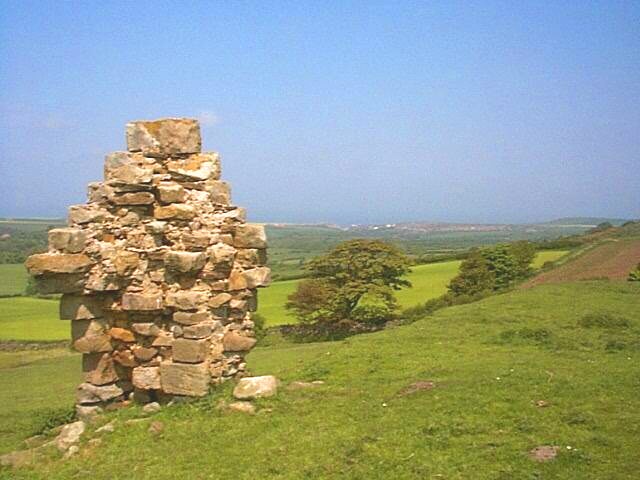 |
For the next reference to Boyntons and Roxby you have to skip ahead from Ingram to his son William and from William to his son Ingram. In a 1316 entry in the Parliamentary Writs (Palgrave, 1834) Ingram is certified as lord of Acklam, Leaventhorp, and Roxby. This is probably the result of the previous entry in the Writs in which Ingram was commanded to show up at Newcastle-Upon-Tyne to fight the Scots.
1314 Boynton or Bovington, Ingram de, (Ingelramus de Boynton) . . . summoned to perform Military Service in person against the Scots. Muster at Newcastle-upon-Tyne, on the feast of the Assumption, 15 Aug. 8 Ed. II. Writ tested at Berwick-upon-Tweed, 30 June [part 1, page, 429, no. 40], p. 559
The location of Roxby, as well as of Acklam, at the northern edge of Yorkshire, put the Boyntons right in the middle of the wars with the Scots. When Henry Percy, the first earl of Northumberland, was leading the charge against the Scots between 1370 and 1400 the Boyntons -- first Thomas and then his son Henry -- were among Percy's lieutenants. [A Boynton Story: Feudal Warlord] However, at the end of the fourteenth century the Boyntons, seem to have centered their lives in Acklam rather than Roxby. In Thomas' will of 1402, for example, he asked to be buried in the church at Acklam and he left money for that church but not for the church at Roxby.
Henry de Boynton joined the 1405 insurrection against the king, and lost his head as well as the family land. One part of the story about the attainting of the land and its return provides an insight into the value of the Boynton manor at Roxby. It is difficult to figure out the value of the land without records of income produced so any clue is helpful.
Aug. 16. 1405. Leicester. Membrane 8Grant for life to Elizabeth late the wife of Henry Boynton, who has not wherewithal to maintain herself and her six children or to pay his debts, of the towns of Rouceby and Neuton, late of the said Henry and forfeited to the king on account of his rebellion, to hold to the value of 20l. yearly, and grant to her also his goods, likewise forfeited, to the value of 20l.; so that she answer for any surplus. By K.
Calendar of Patent Rolls, Henry IV, finish citation. p. 45.
The king was taking back the land held by the Boyntons, but kings, at least Henry IV, did not want to create starving widows, children or mothers. So Elizabeth, Henry's wife, was permitted to retain Henry's goods and the manors at Roxby and Newton. The two manors produced enough income -- 20 pounds a year or more -- for her to live on with her six children.
In 1427 the land was returned to the Boynton family by Henry VI [documents] -- two kings after Henry Boynton's insurrection against Henry IV.
|
Thomas of Roxby
|
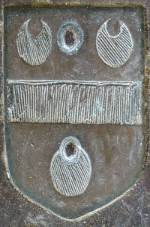 |
At the end of the fifteenth century Robert Boynton married Margaret del See Boynton. That brought a large land holding in Barmston into the family fortune. Robert died before 1500, but not before fathering several children. Their oldest son was Thomas.
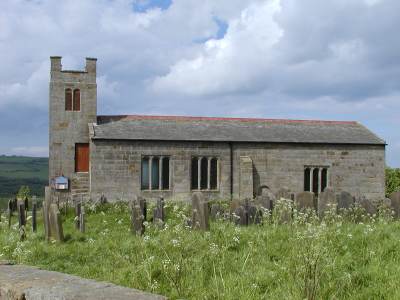 |
Thomas was one Boynton who favored Roxby as a place to live. He built the church at Roxby; it is a small and largely unadorned building.
The grave yard is to the road side of the church and the corner of the manor house, which is all that remains, is just down the hill from the church. The church and the manor house were closely connected. [more about the church] Thomas was the first person buried in the church when he died in 1523 at what must have been a pretty young age. His mother, Margaret, lived until 1536. Choosing to be buried at Roxby suggests his commitment to the manor. He could have been buried at Acklam or at Barmston, but he chose Roxby instead. There is a brass carving of Thomas on the floor of the church. He is dressed in armor and the shield of the Boynton family is on each corner of the brass. The inscription on the brass is
Pray for the soule of Thom's Boynton of Roysby Esquier who caused this chyrche fyrst to be halowed and was ye fyrst corsse that was beryed in yt and decessed the IIII day of marche the yer' of or lord god Mi Vc and IIIIJ on whose soule Thu have mercy amen.
Matthew was the next Boynton who particularly favored Roxby. He was the great, great grandson of Thomas, and lived about a century later. When you look at the fields stretching away from the manor house it is not difficult to imagine this being a favorite place.
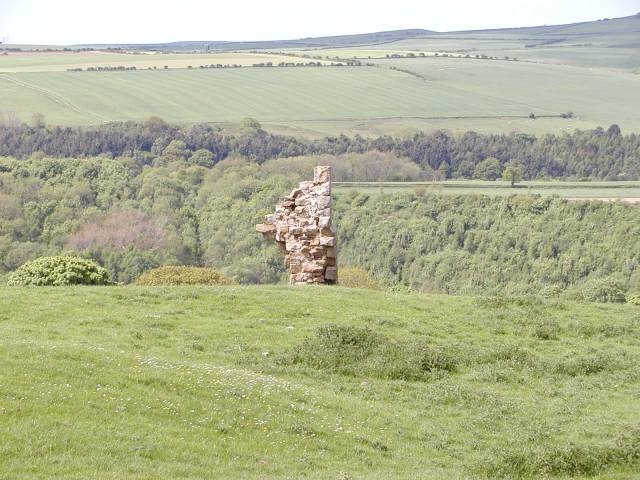 |
Matthew married Frances Griffith of Burton Agnes, and they had a very large family. Frances died in her middle thirties and is buried at the Roxby church rather than either Barmston or Burton Agnes. Matthew carved an inscription on a stone that marks her grave, and her picture is, until this day, in the window of the church. After Frances died Matthew married Katherine Fairfax who is also buried in the church and whose picture with Matthew is also in the window.
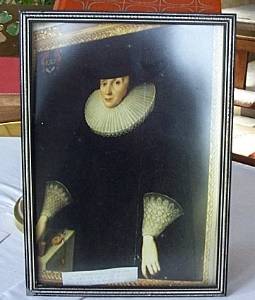 |
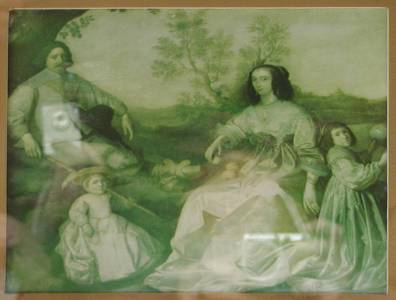 |
Frances is a bit severe; Katherine is a bit green. What is remarkable is the longevity of these pictures -- coming to us from the seventeenth century.
Roxby: "Out of the way" is an understatement. Down a narrow, winding road you arrive at a few farm houses, a church at the bend in the road and one corner of an ancient manor house. It was one corner of the Boynton fortune from 1230 until it was sold at the end of the eighteenth century. Boyntons lived at and drew their wealth from Roxby for more than 500 years.
Some of the oldest Boynton artifacts are located in this small village. The corner of the manor house is impressive as sign of the size of the building for which this was the corner. The carving of Thomas, the stones for Frances and Katherine, and the pictures of the Boynton women are very ancient Boynton objects.
....
Calendar of Patent Rolls, Henry IV, finish citation.
Palgrave, Francis, ed. (1834) The Parliamentary Writs and Writs of Military Summons, Together with the Records and Muniments Relating to The suit and Service Due and Performed to the King's High Court of Parliament and the Councils of the Realm,